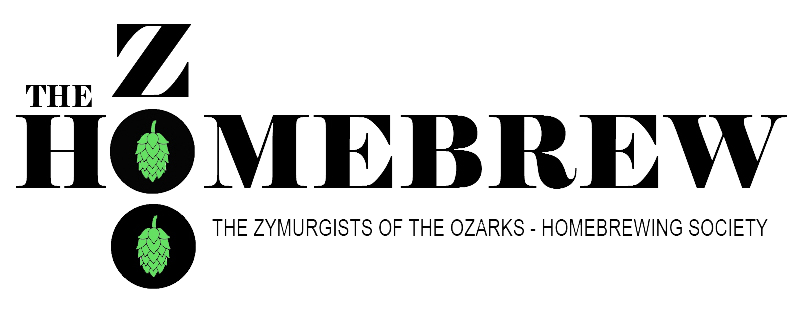by John Huhn
Greetings fellow ZOO members!
This past weekend, October 28-30, 2022 was the judging for the 25th annual Hoppy Halloween competition hosted by the Prairie Homebrewing Companions out of Fargo, North Dakota. It’s one of the last competitions of the season; yes there is a season, for the High Plains Brewer Circuit.
https://kcbiermeisters.com/high-plains-award/
This my first year participating in this circuit and this past weekend, I picked up bronze, silver, and gold medals out of five entries. I received gold for Wee Heavy, silver for Belgian Dark Strong, and bronze for Scottish Heavy. All three medal winning entries scored 40 or higher on BJCP scoresheets. I say none of this as a way to pat myself on the back. Rather, I want to take this success and briefly talk about how I created these medal winning beers.
I’ll start with Eyebrow Beard Wee Heavy. I had retired this beer from competitions, but brought it back for the High Plains Brewer Circuit. The BJCP overall impression for this beer is: Rich, sweet malt depth with caramel, toffee, and fruity flavors. Full-bodied and chewy, with warming alcohol. Restrained bitterness, but not cloying or syrupy.
The trick I use with this beer is to pull one gallon of the first runnings and vigorously boil for 1 hour in a separate pot to reduce volume and create melanoidins but not to the point of making a syrup. This will need to be watched closely as scorching the liquid will ruin the batch. I typically use a stock pot on a second propane burner near the boil kettle so it’s easy to monitor.
Next beer I scored well with and earned a silver medal is BFD Belgian Dark Strong. BFD was the nickname of the guy who got me started on this crazy hobby in 1999. Yes, he was a Big Freakin’ Dude. BJCP Overall Impression: A dark, complex, very strong Belgian ale with a delicious blend of malt richness, dark fruit flavors, and spicy notes. Complex, rich, smooth, and dangerous.
BFD has been one of those white whales for me as I’ve brewed it countless times since I first helped Steve brew the original version in his basement. The version that I brew now is only similar in name as most of the recipe has been changed over the years. I decided years ago to make this a clone of Trappistes Rochefort #8 and while my version is a bit more phenolic than the Rochefort version, that’s what judges expect. For this recipe, it’s vital that I use the Rochefort strain, which is Wyeast Abbey Ale II 1762. The fermentation management of this beer is the trick. I pitch a large 2000ml starter at 64F and after 48 hours let the fermentation free rise up to 70F for the duration of the fermentation. I’ve found that for this yeast to produce the phenolics I want, the best method is to give it a good 2 days to complete the growth and multiplication phases of fermentation then the exothermic nature of fermentation, the thermal mass warms on its own. It’s helpful to have temperature control, but not vital. If you have a room that the temperature can be controlled without wild fluctuations, it will work fine.
Lastly, I wanted to talk about Lil Shillelagh Scottish Heavy. This beer is one of my favorites and I’ve been tweaking this recipe and its process for years. The BJCP overall impression for this beer is: A lower-alcohol, malty beer with light caramel, toast, toffee, and fruity flavors. A slight roast dryness offsets the residual sweetness in the finish, with the bitterness perceived only to keep the beer from being cloying.
The trick is building malt complexity with specialty malts that are complementary e.g. Caramunich, Munich, Honey, and Pale Chocolate each in the 5-6% of the total grist and mashing at a higher rest temperature than typical. I mash in at 160F to create the longer chain sugars that give this light beer a bigger mouthfeel than is expected for a beer that checks in at 3.3% abv as well as a small amount of dextrin for rounding out the perception of sugar without it being too sweet.
At the end of the day, everyone has to find their own path to dialing in there beers. While every so often I’ll happen on a recipe that is great the first time, I often have to rebrew multiple times until I find the right path. To me, this is a big part of the fun. Finding the path for each beer is super rewarding in it’s own right and that’s who I have to please first, myself.
Cheers,
John Huhn
